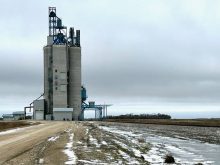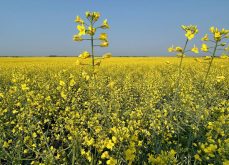MarketsFarm — Canada’s farmers intend to seed more acres to wheat and less to canola in 2022, according to the first survey-based estimates from Statistics Canada for the upcoming crop year released Tuesday.
Canola area is forecast at 20.9 million acres by the government agency, which would be down by seven per cent from the previous year and at the lower end of trade expectations. The decline in canola area comes despite high prices and strong global demand, with the drought in 2021 also said to be influencing seeding decisions.
Read Also

U.S. livestock: CME cattle tick lower in thin pre-holiday trade
Chicago | Reuters – Chicago Mercantile Exchange live and feeder cattle futures were little changed but ended slightly lower on…
Ongoing uncertainty due to the COVID-19 pandemic and international geopolitical conflicts was a likely factor in seeding decisions, StatsCan said.
“Rising input costs for Canadian farmers, including fertilizer and fuel, may also contribute to seeding decisions,” the agency said.
Total wheat area in the country is forecast to rise by 7.2 per cent on the year, to 25 million acres. Of that total, spring wheat area is forecast to increase by seven per cent at 17.6 million acres, while durum is forecast to be up by 12.5 per cent at 6.2 million. Meanwhile, winter wheat plantings were thought to be down 13 per cent at 1.2 million acres.
“An anticipated increase in area for wheat is likely attributable to strong prices and high worldwide demand,” StatsCan said.
In other grains, corn and oats are both expected to see increased planted area on the year, with corn up 6.4 per cent at 3.7 million acres, and oats up 16.6 per cent at four million acres. Barley area is expected to be down by 9.7 per cent at 7.5 million acres.
Canadian soybean area is forecast at 5.4 million acres, which would be up by 0.7 per cent from the previous year.
For the pulses, lentil area is forecast to increase to 4.5 million acres, which would be up 4.2 per cent from 2021. Peas, meanwhile, are forecast to be down by seven per cent at 3.6 million acres.
A cool and wet spring in the eastern Prairies is expected to delay seeding in that area, which may lead to adjustments in the final figures for planted acres. StatsCan is scheduled to release updated acreage estimates on July 5.
















